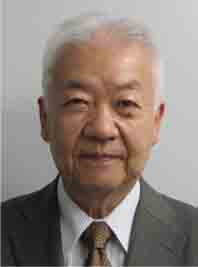Masayoshi Nakawo
Director, Center for Area Studies, National Institutes for the Humanities

Director, Center for Area Studies, National Institutes for the Humanities
Masayoshi Nakawo

I first visited India about forty years ago. What I saw from the limousine bus between Calcutta Airport and my hotel in Calcutta left an indelible impression on me. A crowd of children, barely wearing rags around their hips, followed our bus, pointing their fingers at us. Old people were squatting, all in a similar posture, by the roadside, doing nothing but looking at the ground absent-mindedly. They may have been meditating.
In those days in Japan, the average monthly salary for an employee newly graduated from college was less than 20,000 yen, while a cheap air ticket from Haneda to Calcutta cost 140,000 yen. The huge disparity between the limousine bus passengers, mostly Europeans and Americans who came to Calcutta by air, and life outside the bus window was a shock. Life outside the window was so unrelated to us, as if we were watching a movie.
About twenty years ago, I visited a research institute in Delhi. I woke up early, perhaps due to jetlag, and went for a walk around the hotel. An older middle-aged gentleman came to me, asking, "Are you from Japan?" He told me that he was involved in education in India, and asked me many questions about the Japanese education system, such as how many years children go to elementary school and when they start learning English. We walked together, talked for approximately thirty minutes, and came back to the entrance of my hotel. When I was saying good-bye to him, he said, "I have two daughters. They haven't eaten anything for the last couple of days. Could you give me some money so that I can buy them some food?"
A few years ago, I stopped over in Bangalore when I attended an international academic conference. Bangalore, a major city with many industries, including aircraft, machinery, electronic appliances, and precision machinery, is a center for scientific research and modern industry in India. Bangalore is a symbol of India's recent modernization and prosperity. International academic conferences held in India are rapidly increasing.
In a movie, they sing, "Kaanchi re kaanchi re, prit meri saanchi..." Many more movies are made in India than in Hollywood. Musicals, with many beautiful men and women, are particularly my favorite.
I am so glad that we are now launching our Contemporary India Area Studies, following Islamic Area Studies and Contemporary Chinese Area Studies. For area studies, obtaining information on the subject area is essential, including nature, society, ethnic groups, customs, and religions. What people eat in their everyday lives, how they form their families, and other knowledge based on their lifestyle are also required. I hope a more comprehensive and organic understanding entrenched in contemporary India will be achieved, overcoming academic sectionalism. In the global context, what is the Indian world?